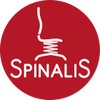Choosing your chair
Most people still do not really know how to choose a proper chair. That is why they usually follow traditional rules, which are mostly based on technical specifications and prices. Only a few people actually consider the potential health consequences of using such a chair. Will it really prevent the backache, or, quite opposite, will it cause it? Most ergonomic chair retailers do not realize how prolonged use of these chairs can impact the health of their customers. As a result, their purchases are based on technical details, design, and price. Back pain, fatigue, lack of focus at work, and other issues caused by prolonged sitting are the consequences of using an ill-fitted chair.
While searching for a proper chair you may stumble upon a few commonly used terms such as office chairs, ergonomic chairs, and active/healthy chairs. The approach of their producers to product marking (branding) may cause even greater confusion to inexperienced consumers. That is why we have prepared two charts for you, which can be of help in determining the type of chair that will be most suitable for your needs.
You will find more specific descriptions of listed types of chairs in the links in the left column menu. This will help you with their clear identification.
|
The daily recommended time of sitting |
Ergonomic level | |||
| 1-2 hrs | 3-4 hrs | 5-12 hrs | ||
| Office Chairs | Appropriate | Inappropriate | Inappropriate | None |
| Ergonomic Chairs | Ideal | Appropriate (for people with a healthy back) |
Inappropriate | Body adjusts to the chair |
| Health Chairs (seat on a spring) |
Ideal | Ideal | Ideal | Chair adjusts to your body |
Health effects of prolonged daily sitting
The following chart describes the health effects accompanying daily sitting (8 hrs or more including periodical breaks) on particular types of chairs:
| Health effects | Pelvis mobility* |
|||
| Scoliosis | Slipped disc | Back pain | ||
| Office chairs | Cause | Threaten | Cause | None (static seat) |
| Ergonomic chairs | Contribute | Threaten | Cause | None (static seat) |
| Health Chairs (seat on a spring) | Prevent | No threat | Stop | Very good (movable seat) |
*Pelvis mobility: During the daily sitting, most of the movements are done to the sides. We also move forward, above the desk. Every such move begins from the pelvis (core). That is why mobility is a very important criterion when choosing a chair. Our body will not stay in a single position for long and rather makes us move and wriggle, change the angle of our core. If, however, the mobility of the pelvis is not possible, it causes the occurrence of "popping" in the lower back and hips. This is quite damaging to the overall health of our spine and intervertebral discs.
At this point, you know which chair is most suitable for your needs. Please take a look at the simple visualization of how the movable seat works and more specific comparison of ergonomic chairs and chairs with movable seats from the viewpoint of health benefits and effects of sitting on them on one's spine.
